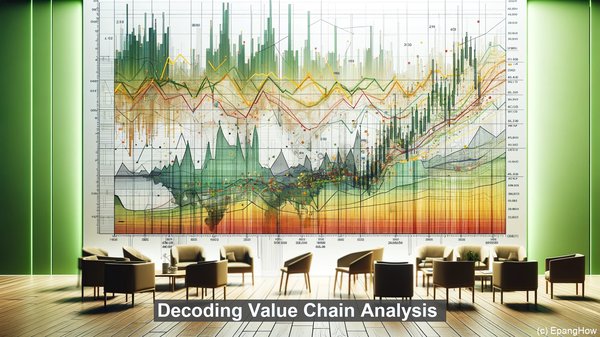Introduction: Analyzing Business Processes
Hello everyone! In today’s article, we will be delving into the world of business analysis, specifically focusing on two widely used methodologies: input-output analysis and value chain analysis. These tools play a crucial role in understanding the dynamics of a business, its operations, and the interdependencies within. So, let’s get started!
Unveiling Input-Output Analysis
Input-output analysis, also known as I-O analysis, is a method used to examine the interrelationships between different sectors of an economy. It traces the flow of goods, services, and monetary transactions between these sectors. The core idea behind I-O analysis is to understand how changes in one sector can impact the others, creating a ripple effect throughout the economy. This analysis is often represented through input-output tables, which showcase the inputs required by each sector and the outputs they generate.

Applications of Input-Output Analysis
The applications of input-output analysis are diverse. It is widely used in economic planning, as it helps identify the key sectors driving economic growth and their interdependencies. For example, if a government wants to invest in infrastructure, I-O analysis can reveal the sectors that will benefit the most from this investment. It is also used in environmental studies, as it can quantify the resource use and environmental impacts of different sectors. Additionally, I-O analysis is valuable in assessing the effects of policy changes, such as trade tariffs or tax reforms, on various sectors.
Decoding Value Chain Analysis
While input-output analysis focuses on the interrelationships between sectors, value chain analysis zooms in on the internal processes of a single sector or company. It examines the activities involved in creating a product or service, from the procurement of raw materials to the delivery of the final offering. The value chain is divided into primary activities, which are directly involved in production and delivery, and support activities, which facilitate the primary activities. By analyzing the value chain, businesses can identify areas of inefficiency, potential cost savings, and opportunities for differentiation.
Value Chain Analysis in Practice
Value chain analysis has numerous practical applications. It is often used in strategic planning, helping businesses understand their competitive advantage and develop strategies to enhance it. By identifying the primary and support activities that contribute the most value, companies can prioritize their investments and resource allocation. Value chain analysis is also valuable in supply chain management, as it can pinpoint potential bottlenecks or areas of vulnerability. Furthermore, it is a crucial tool in assessing the feasibility and impact of potential process improvements or technology implementations.

